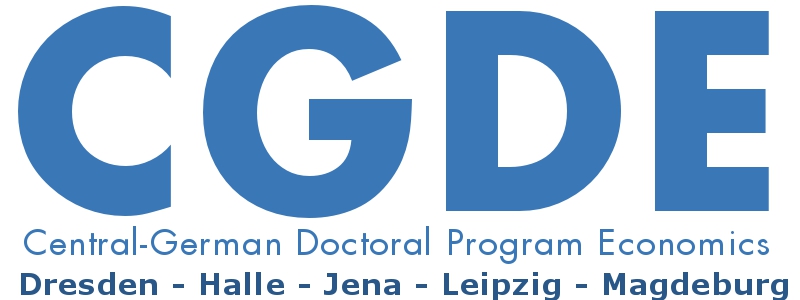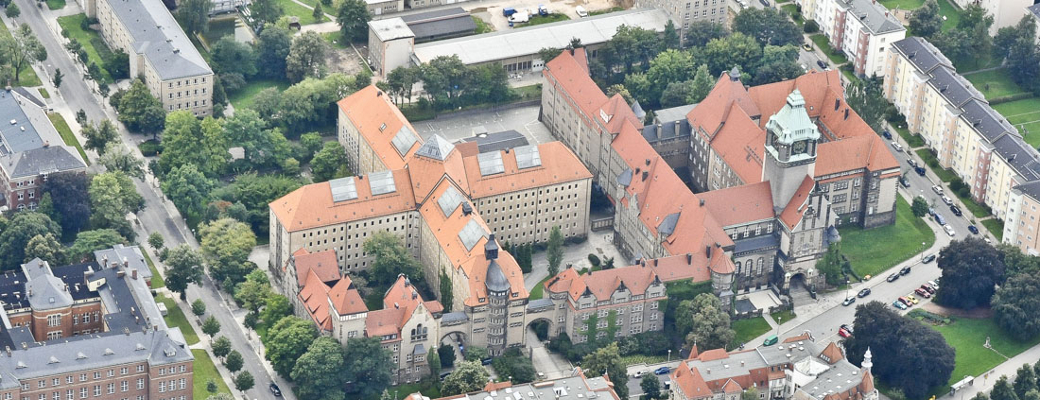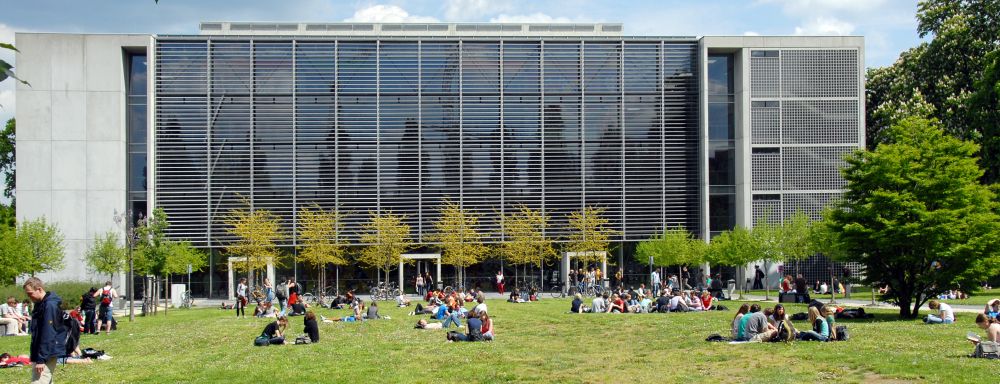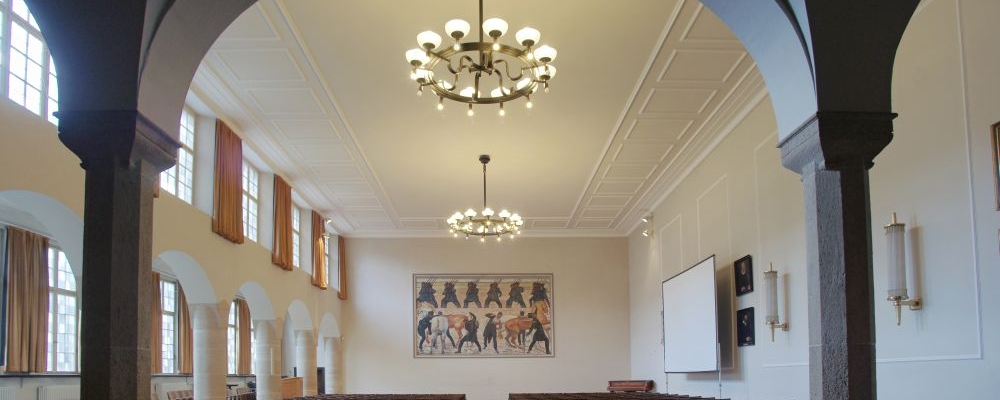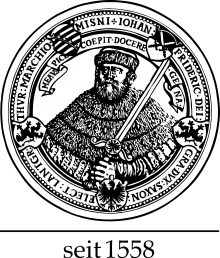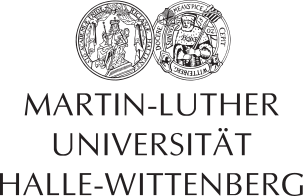Frontiers in Econometrics
Dynamic Stochastic General Equilibrium Modeling (DSGE Modeling)
Lecturer: Prof. André Kurmann, Ph.D. (University of Pennsylvania)
Date: August 30, 2010 – September 02, 2010 (Martin-Luther-Universität Halle)
Venue: Martin-Luther-Universität Halle, Institut für Informatik, Seckendorff Platz 1 (Vorlesungsraum 1.23, Computerraum 3.3.4)
Registration: sprenger@wifa.uni-leipzig.de
Course Description
This short course is an introduction to modern empirical methods in macroeconomics. We will cover the following topics: (1) Solving and evaluating Dynamics Stochastic General Equilibrium (DSGE) models; (2) estimating DSGE models with limited-and full-information methods; (3) comparing structural VARs with DSGE models. We will use different benchmark models of the modern macro literature to apply the methods learned in class.
The course assumes that students have a good knowledge of modern structural macroeconomics, timeseries analysis and matrix algebra (see course prerequisites below). Students should also be comfortable with basic programming notions of MATLAB. For students not familiar with MATLAB, please consult the following tutorials provided by Elmar Mertens (Federal Reserve Board): (i) first steps; (ii) matrices and more.
The course is taught on blackboard. In addition, there are computer lab sessions with MATLAB.
Students should have a copy of the book available and should read the assigned chapters in advance of the course. Much of the course material is also covered (in greater detail) in:
Canova, F. (2007). Methods for Applied Macroeconomic Research. Princeton: Princeton University Press.
Hamilton, J. (1994). Time Series Analysis. Princeton: Princeton University Press
The course grade is determined by a short paper (max. 10 pages) where students apply the methods learned in class to critically review a published paper or working paper of the empirical macro literature. The deadline for handing in the assignment will be determined during the course.
Course outline
Monday till Thursday from 09:30 till 15:30
(1) Approximating and solving DSGE models
De Jong and Chetan (2007): chapter 2
Blanchard, O. J. et C. M Kahn (1980). “The Solution of Linear Difference Models under Rational Expectations.” Econometrica 48(5).
King, R. G. et M. W. Watson (1998). “The Solution of Singular Linear Difference Systems under Rational Expectations.” International Economic Review 39(4), 1015-1026.
King, Robert G. and S. Rebelo (2000). “Resuscitating Real Business Cycles.” Handbook of Macroeconomics.
King, R. G. et M. W. Watson (2002). “System Reduction and Solution Algorithms for Singular Linear Difference Systems Under Rational Expectations.” Computational Economics 20, 57-86.
Lubik, A. T. and Schorfheide F. (2001), “Computing Sunspots in Linear Rational Expectations Models.” Journal of Economic Dynamics and Control 28(2).
(2) Evaluating DSGE models
DeJong and Chetan (2007): chapter 3; 4.1-4.2; 6.1-6.2
Cooley, T.F. and E.C. Prescott (1995), “Economic Growth and Business Cycles.” In T.F. Cooley (ed): Frontiers of Business Cycle Research, Princeton: Princeton University Press.
Baxter, M. B. and R.G. King (1999), “Measuring Business Cycles: Approximate Band-Pass Filters for Economic Time Series,” Review of Economics and Statistics, 81(4), 575-593.
Cogley, T. and J. M. Nason (1995). “Output Dynamics in RBC Models.” American Economic Review 85, 492-510
Cogley, T. and J. M. Nason (1995). “Effects of the Hodrick-Prescott filter on trend and difference stationary time series: Implications for business cycle research.” Journal of Economic Dynamics and Control 19, 253-278.
Watson, M. (1993), “Measures of Fit for Calibrated Models,” Journal of Political Economy, 10111041.
Wen, Y. (1998), “Can a Real Business Cycle Model Pass the Watson Test,” Journal of Monetary Economics 42, 185-203.
DeJong, D.N., B.F. Ingram, et C.H. Whiteman (1996), “A Bayesian Approach to Calibration,” Journal of Business & Economic Statistics 14(1), 1-9.
(3) Limited- and full-information estimation of DSGE models
DeJong and Chetan (2007): chapter 7
Burnside, C., M. Eichenbaum and S. Rebelo (1993). “Labor Hoarding and the Business Cycle.” Journal of Political Economy 101(2), 245-273.
Gali, J. and M. Gertler (1999), “Inflation Dynamics: A Structural Econometric Analysis,“ Journal of Monetary Economics 44, 195-222.
Kurmann, A. (2007). “VAR-based estimation of Euler equations with an application to New Keynesian pricing.” Journal of Economic Dynamics & Control 31, 767-796.
Kleibergen, F. and S. Mavroeidis (2009). “Weak Instrument Robust Tests in GMM and the New Keynesian Philllips Curve.” Journal of Business and Economic Statistics 27(3), 293-311.
Christiano, L.J., M. Eichenbaum and C.L Evans (2005). “Nominal Rigidities and the Dynamic Effects of a Shock to Monetary Policy.” Journal of Political Economy.
Hall, A., A. Inoue, J.M. Nason and B. Rossi (2009). “Information Criteria for Impulse Response Function Matching Estimation of DSGE Models.” ERID Working paper no. 29.
DeJong and Chetan (2007): chapters 4.3, 8 and 9
Ireland, P. N. (2004). “A method for taking models to the data.“ Journal of Economic Dynamics and Control, 28.
Otrok, C. (2001). “On measuring the welfare cost of business cycles.” Journal of Monetary Economics 47, 61-92.
Fernandez-Villaverde, J. and J. Rubio-Ramirez (2004). “Comparing equilibrium models to the data: A Bayesian Approach.” Journal of Econometrics, 153-187.
Smets, F. and R. Wouters (2007). “Shocks and Frictions in US Business Cycles: A Bayesian DSGE Approach.” American Economic Review 97(3), 586-606.
(4) Comparing structural VARs with DSGE models
Chari, V.V., P.J. Kehoe and E.R. McGrattan (2007). “Are Structural VARs with Long-Run Restrictions Useful in Developing Business Cycle Theory?” Minneapolis Fed Staff Report 364.
Christiano L. J., M. Eichenbaum et C.L. Evans (1999). ”Monetary Policy Shocks: What have we learned and to what end?” Handbook of Macroeconomics.
Christiano, L.J., M. Eichenbaum and R. Vigfusson (2006). “Assessing Structural VARs.” NBER Macroeconomics Annual 2006.
Fernandez-Villaverde, J., J. F. Rubio-Ramirez, T.J. Sargent and M.W. Watson (2007). “ABCs (and Ds) of Understanding VARs”. American Economic Review 97(3), 1021-1026.
Kurmann, A. and C. Otrok (2010). “News shocks and the slope of the term structure of interest rates.” Working paper.
Uhlig, H. (2005). “What are the effects of monetary policy on output? Results from an agnostic identification procedure.” Journal of Monetary Economics.
References with a (*) are required course preparation.
